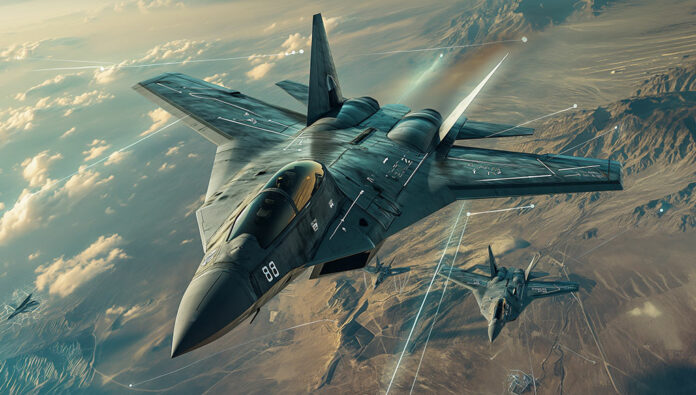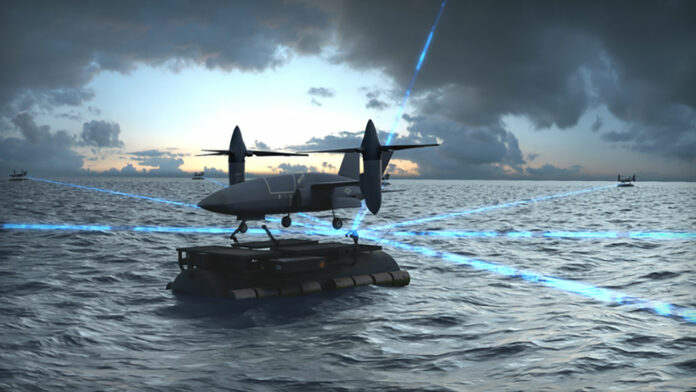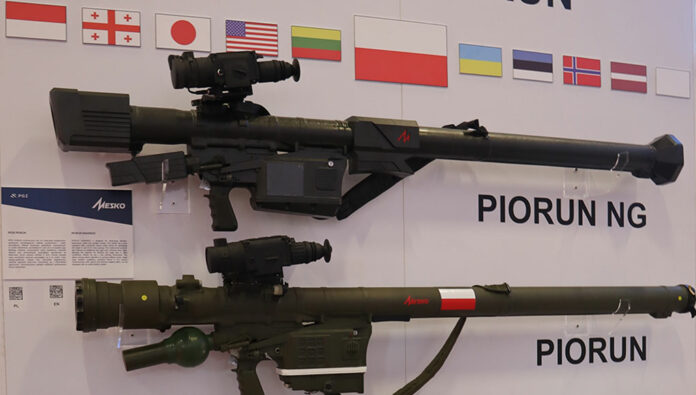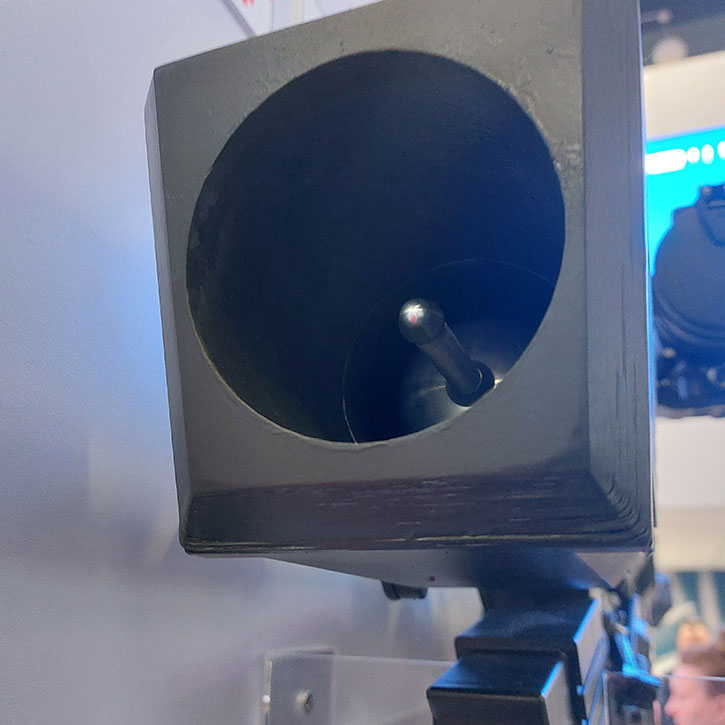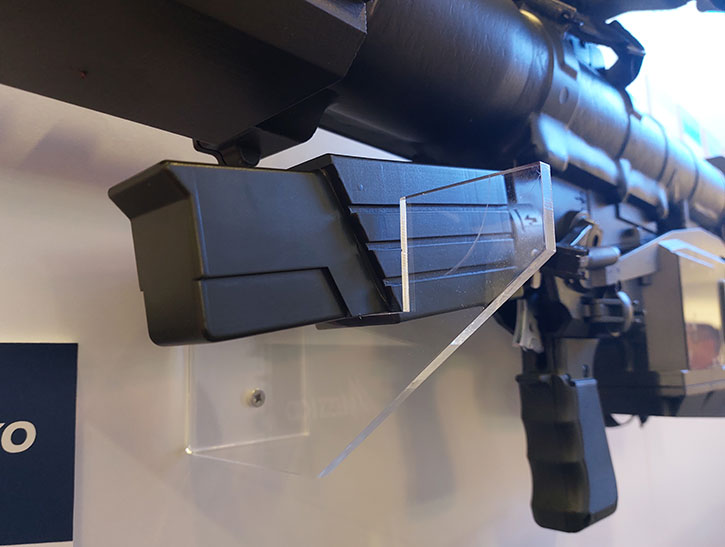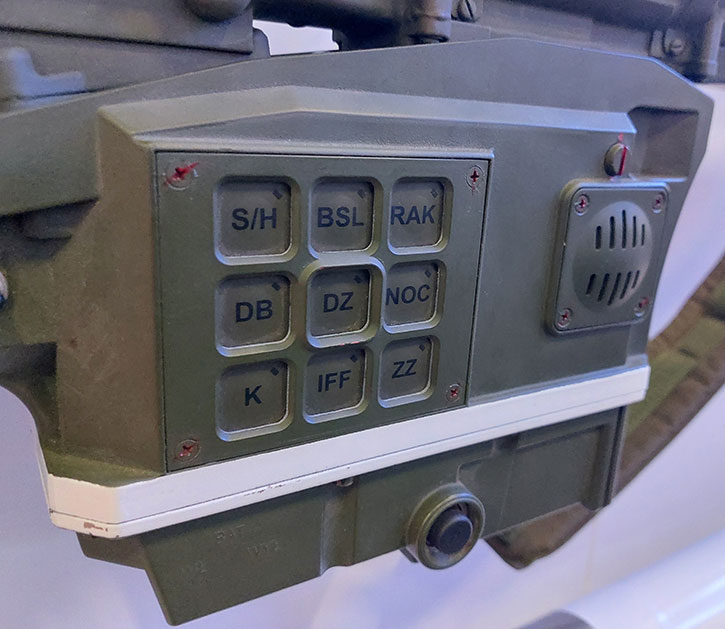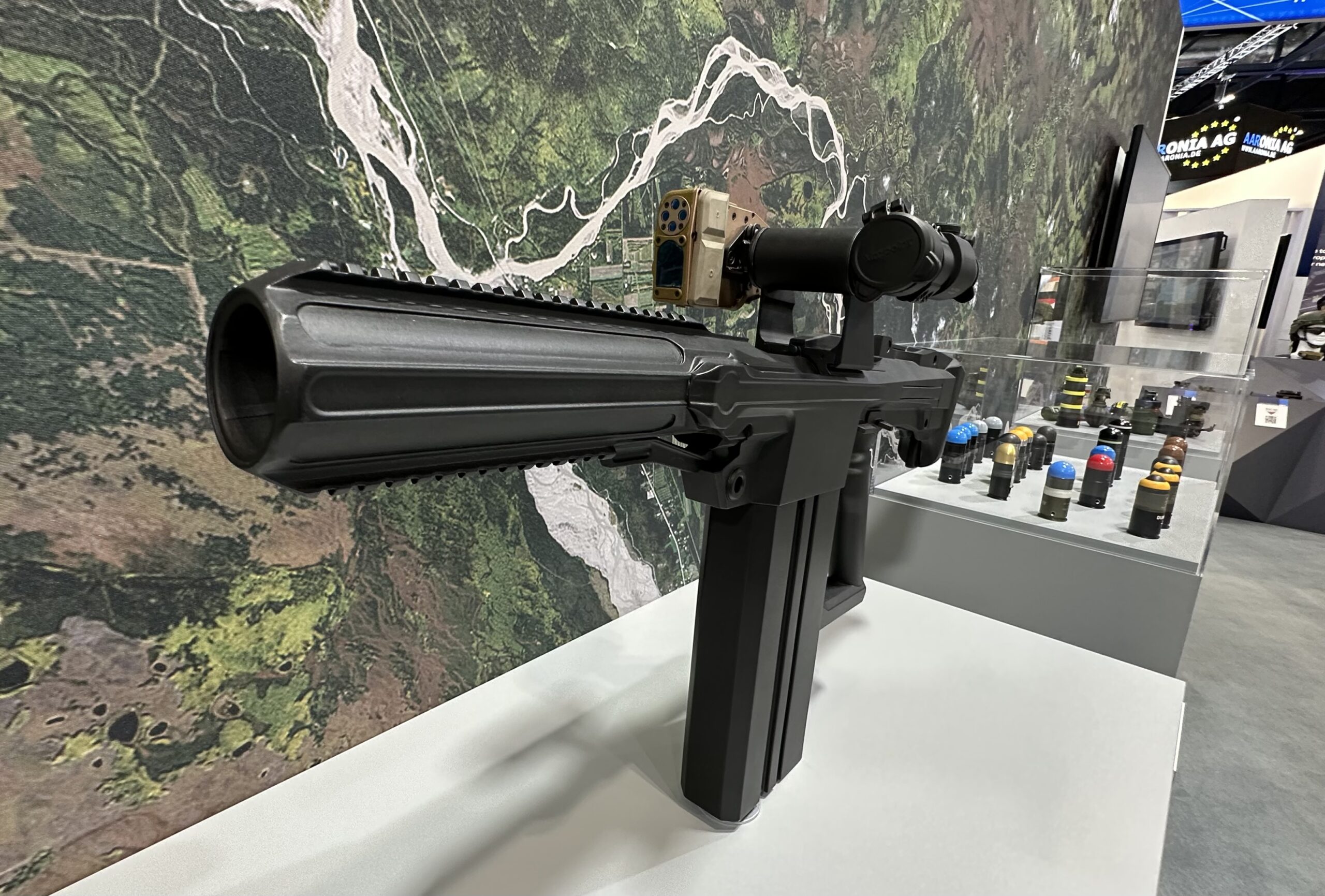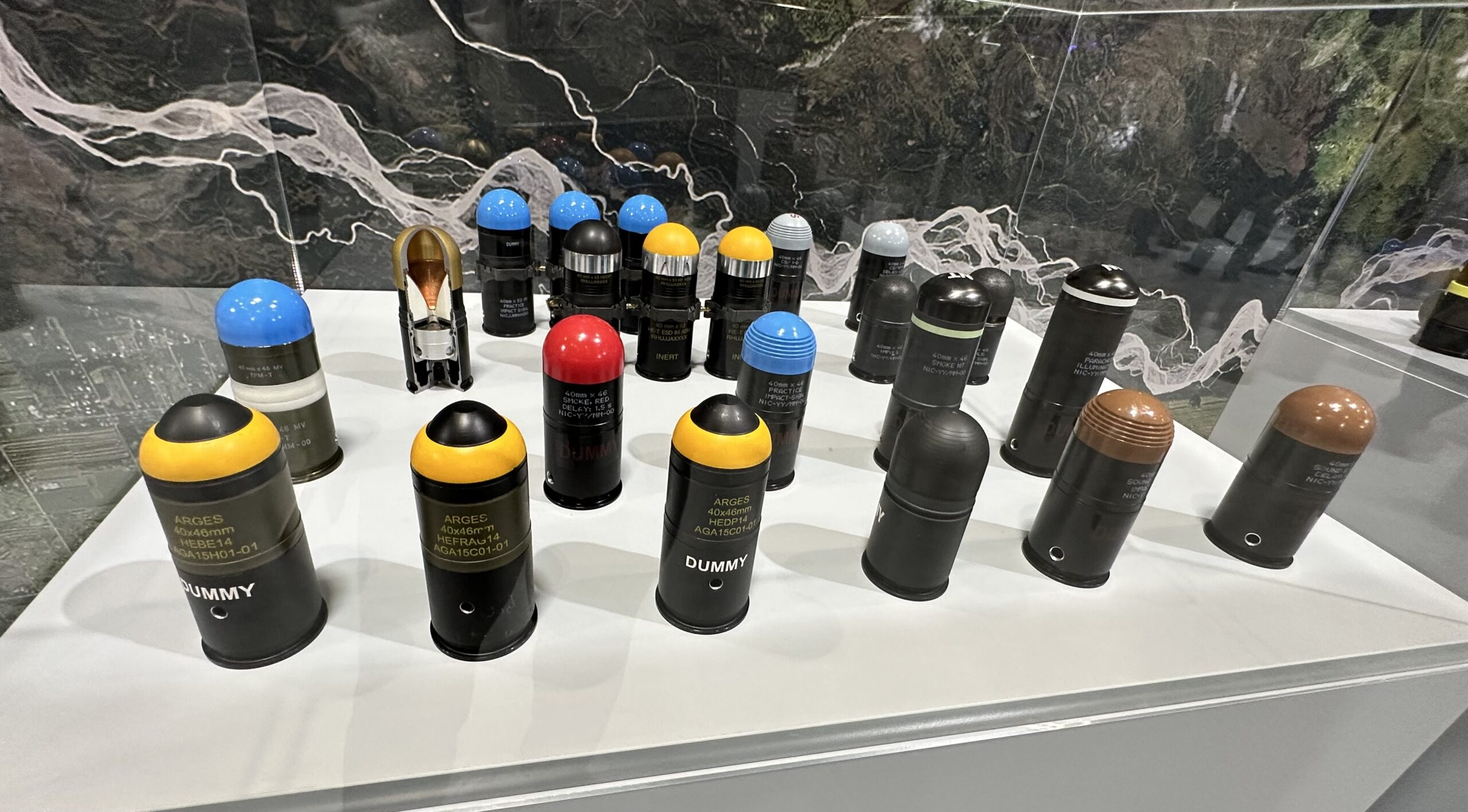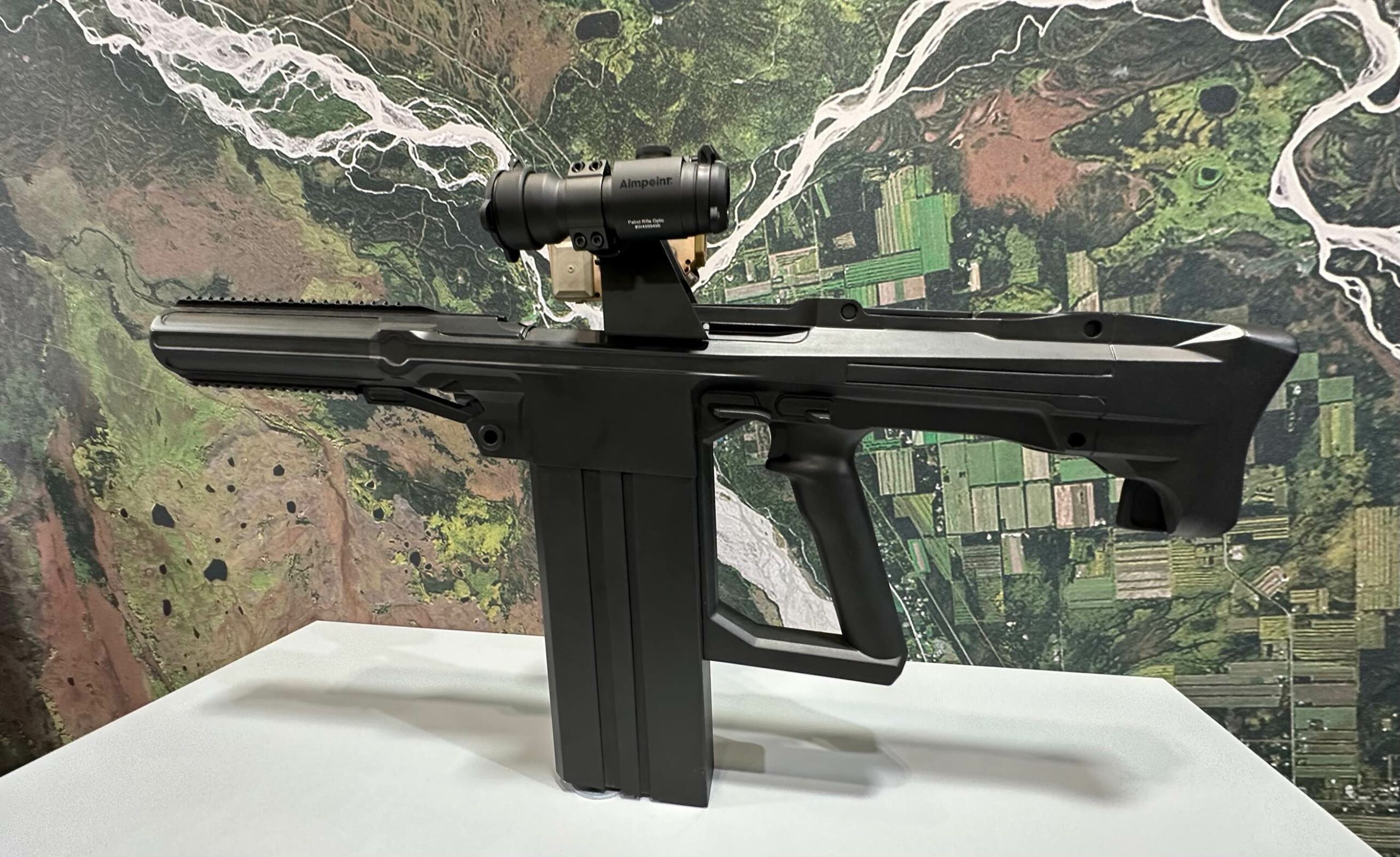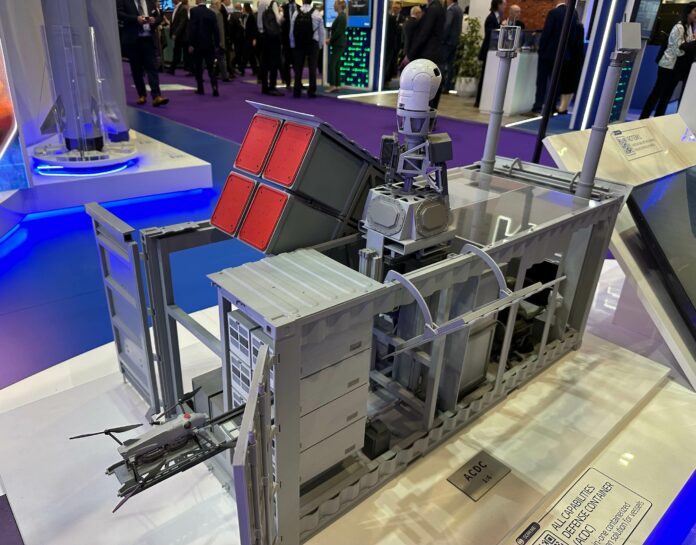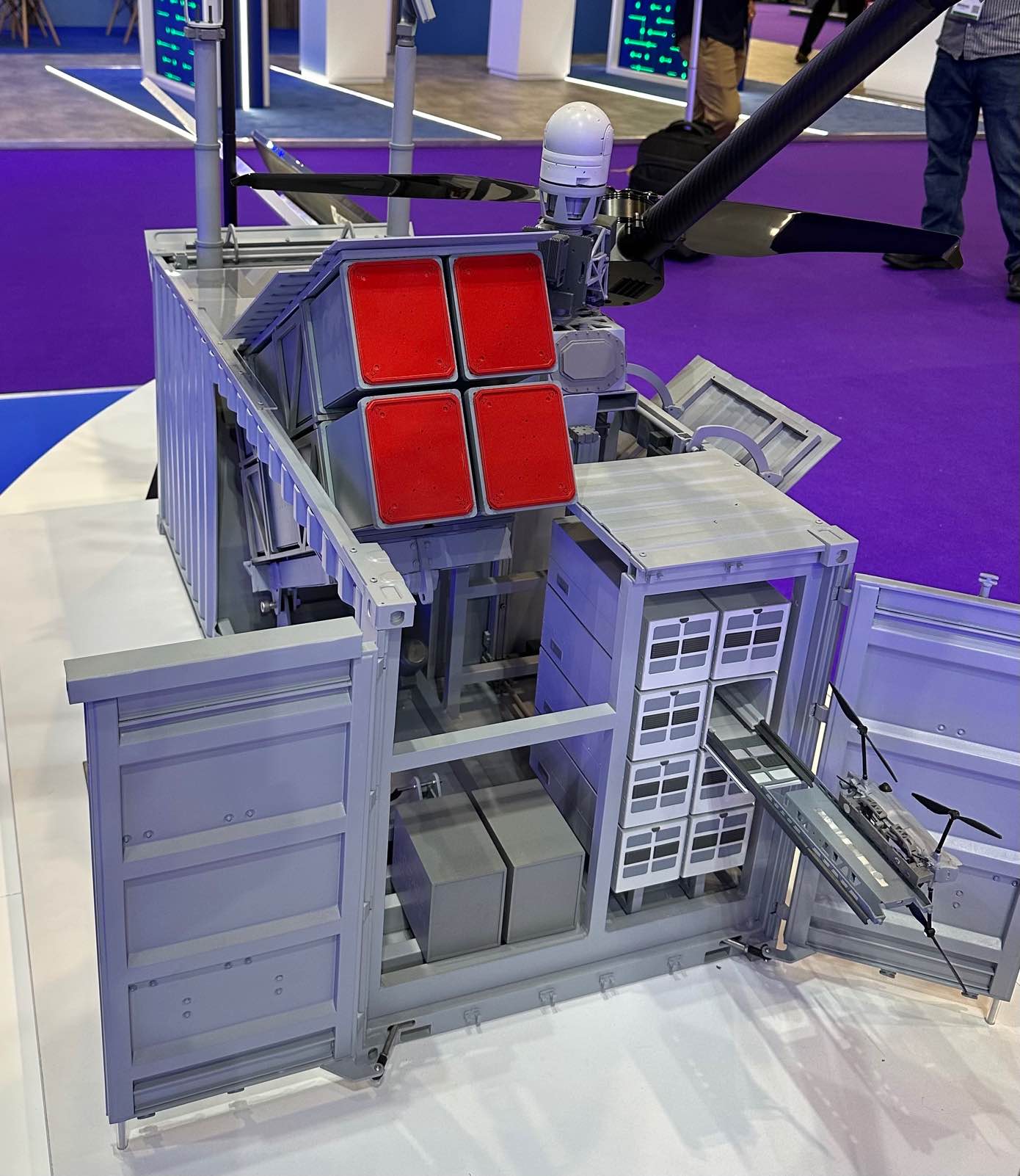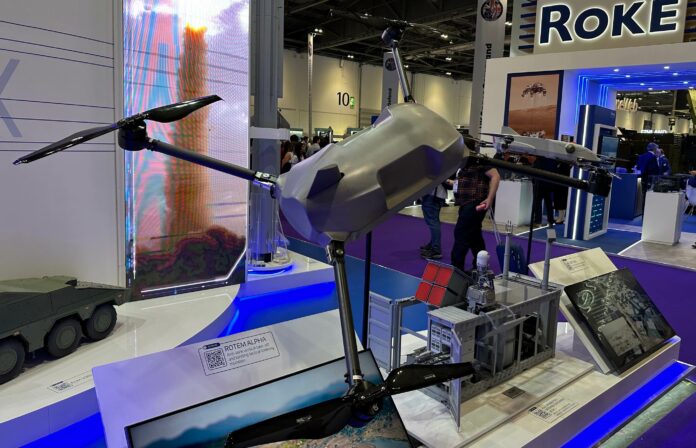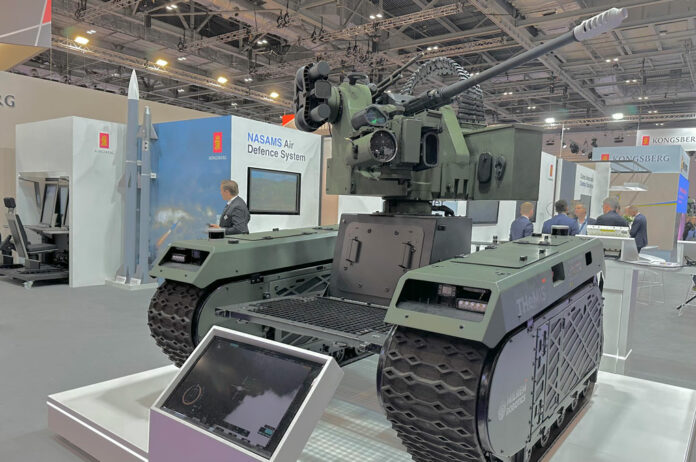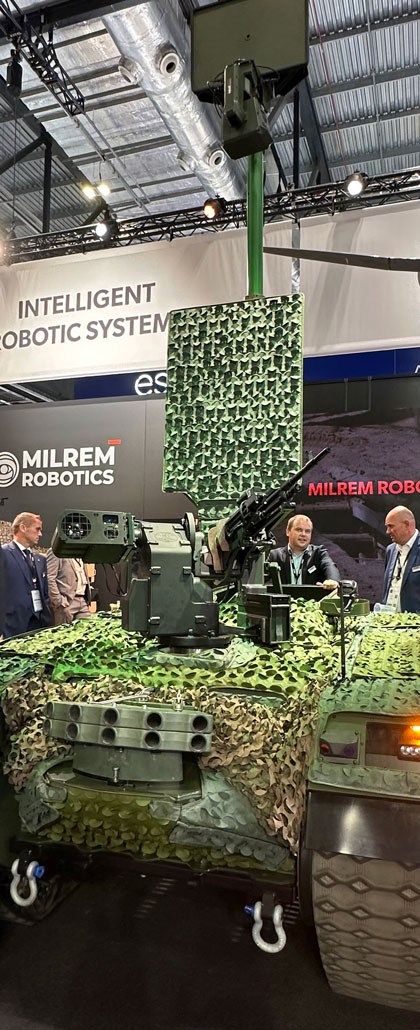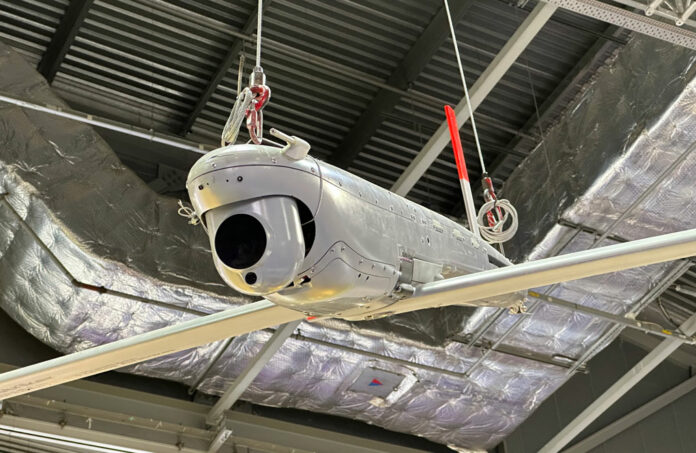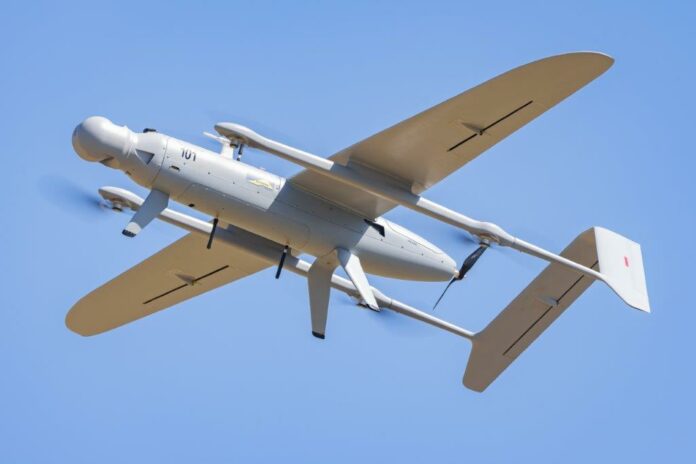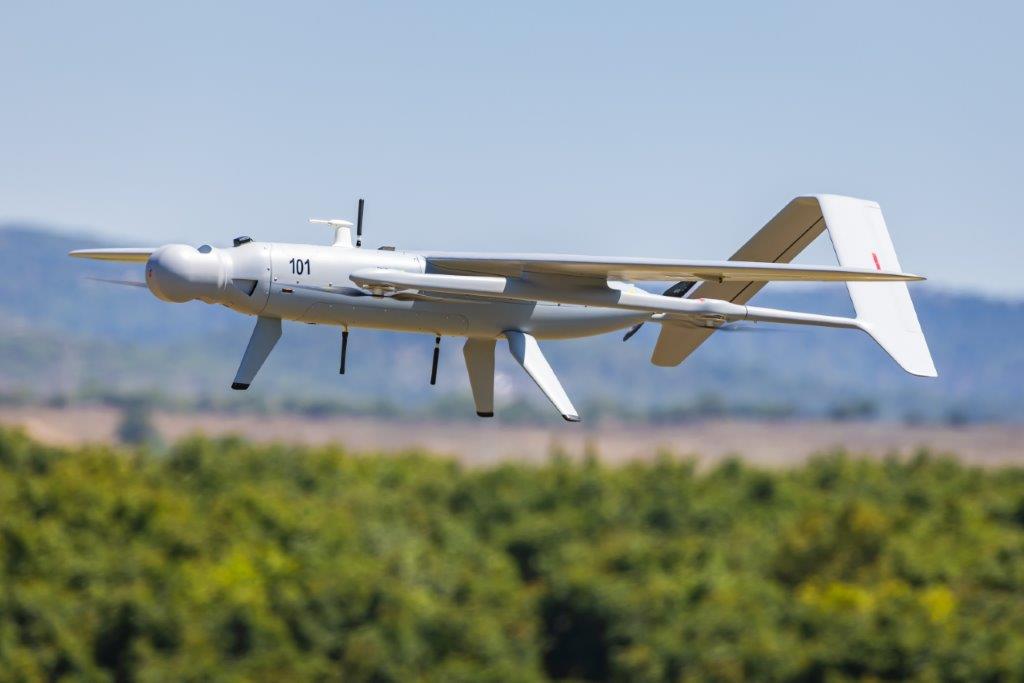Rheinmetall Canada and Quaze are launching an innovative wireless charging solution for drones at DSEI 2023. The Drone Swarm Tactical OverWatch (DSTOW) module developed for Rheinmetall’s Mission Master UGV offers a unique solution enabling continuous, unattended and uninterrupted drone operations.
Although recent drone technologies have made strides in ISR operations, these aerial vehicles remain limited in range and endurance and need frequent replacement of batteries or lengthy recharging, requiring extensive human intervention. Current technologies can only charge one drone at a time. To address these issues, Rheinmetall and Quaze have developed the DSTOW module, a wireless surface charging solution that can power multiple drones at once. Using inductive charging, the technology does not require precise alignment; nor does drone size matter.
DSTOW was developed for the Rheinmetall Mission Master family of unmanned ground vehicles, and is compatible with all Mission Master configurations, it can also be fitted to the Polaris MRZR D4. It eliminates the need for cumbersome power cords, delivering uninterrupted power regardless of equipment or climate. Even when covered with water, sand, dust, snow, or ice, the charging surface technology works because of its volumetric power, enabling drones to be recharged up to 4 inches above the charging surface.
By automating the drone rotation and relay process, the DSTOW maintains fully charged drones that can remain in the sky, providing continuous surveillance – a critical advantage on modern battlefields where real-time persistent information is essential for superior situational awareness. The DSTOW system also includes an automated landing and take-off feature, similar to valet parking, allowing for uninterrupted operations. The system’s user interface is designed to control multiple drones in an automatic operation, making it possible to operate several drones simultaneously with a single device. Rheinmetall’s dedicated tablet and integrated soldier systems are both compatible with the DSTOW system, allowing for easy control of Mission Master vehicles, drones and their integrated payloads.
The DSTOW recharges all drones on the Blue UAS-Cleared List, enabling fully unmanned drone operations. It can charge as many drones as the surface’s power allows. For instance, if the surface capability is 500w, the DSTOW can power one drone or 500 1w micro drones. Furthermore, since the technology can deliver a high voltage charge, the system can support larger drone using high voltage systems.






